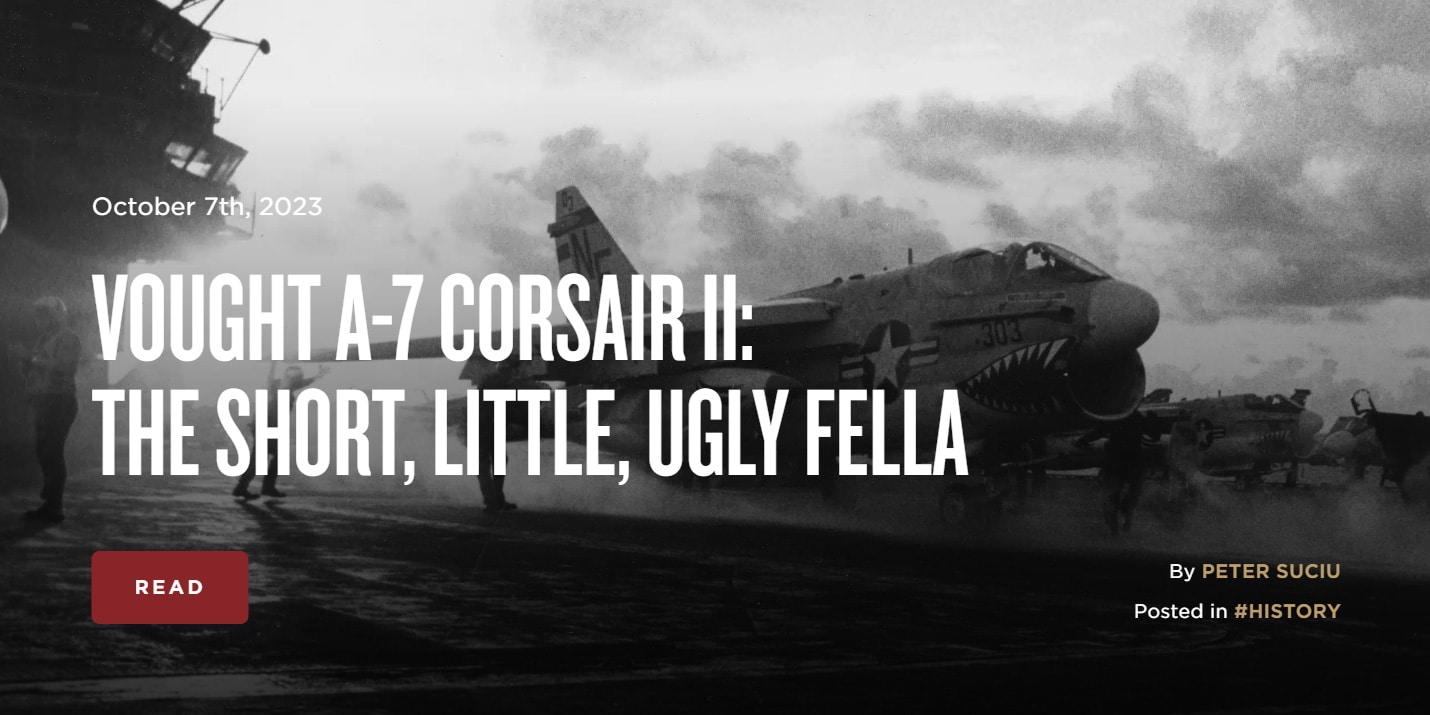Hello all, here is today's article posted on TheArmoryLife.com. It is titled “Vought A-7 Corsair II: The Short, Little, Ugly Fella” and can be found at https://www.thearmorylife.com/vought-a-7-corsair-ii/.





 jalopnik.com
jalopnik.com
I love the F-8 Crusader, last of the gunfighters, as they said about it.I like the A-7, but I'm much more partial to its older sibling, the F-8 Crusader
View attachment 44837
My Dad was on the Ranger from ‘58 to ‘62 with a stint on the Ticonderoga and Was the first crew aboard the Ranger when it arrived in San Diego after sea trials. He has old film of F8s taking off and landing. He couldn’t believe how fast they were. He passed away in 2014.I was a AQ in the Navy 81-85 & with VA-192 82-85. I really enjoyed troubleshooting the electronics & checking the Weapons systems before the Ordys loaded the weapons. It was a reliable & deadly accurate light bomber. On board the USS Ranger (CV-61) in 83-84 our Corsairs spent more time as the alert fighter than the F-14s did. It seems the Tomcats had a problem keeping both of their computers running.
I really enjoyed this article. Kevin
He was on the Ranger when I was born. It was supposed to go to Dry dock before I was on it. There was always a Catapult or engine breaking down. I think it was Decommissioned in the 90s ?My Dad was on the Ranger from ‘58 to ‘62 with a stint on the Ticonderoga and Was the first crew aboard the Ranger when it arrived in San Diego after sea trials. He has old film of F8s taking off and landing. He couldn’t believe how fast they were. He passed away in 2014.
My father-in-law served during the Vietnam War on several carriers, Enterprise and Ranger are two. He was a aviation electronics technician . They flew inland to perform maintenance then back to sea, up the coast and replete. He said the Intruders, Corsairs and this aircraft were tough , hardy aircraft.Hello all, here is today's article posted on TheArmoryLife.com. It is titled “Vought A-7 Corsair II: The Short, Little, Ugly Fella” and can be found at https://www.thearmorylife.com/vought-a-7-corsair-ii/.

Yea, Some of these authors really don't know their material.I really enjoyed this article, but I’m curious; in the thirteenth image of the article, it shows A-7 Corsairs on the deck of the USS Oriskany. However, the aircraft in that picture appear to have pivoted variable-incidence wings, which is characteristic of the F-8 Crusader, and not the A-7 Corsair. While it is difficult to be sure, and I was unable to enlarge the picture, it sure does appear that the planes in the picture have high-mounted variable-incidence wings.
